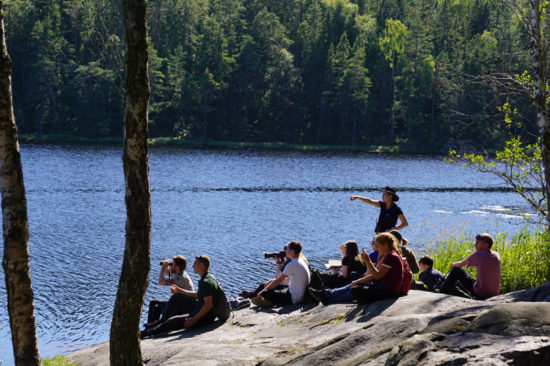I am a zoologist with a background in behavioural ecology and wildlife conservation. I split my time between academia and science communication (read more about my sci-comm activities here).
I work as Senior Lecturer in Environmental Sciences at the College of Health, Medicine and Life Sciences, Brunel University London. I also teach at Oxford University’s Department for Continuing Education.
I have previously lectured at the University of Reading, Nottingham Trent University and the University of Oxford.
For a full CV, click on my LinkedIn page.
Education

University of Reading, UK
Postgraduate Certificate in Academic Practice
University of Oxford, UK
DPhil in Zoology
MSc in Biology (Integrative Bioscience)
Jacobs University Bremen, Germany
BSc in Biology
Rice University, Houston, USA
Semester abroad
Selected research experience
Biotelemetry and semi-aquatic animals
My doctoral thesis, completed at Oxford University’s Wildlife Conservation Research Unit, focused on investigating the use of miniaturised Time-Depth Recorders (TDRs) for analysing the diving behaviour of semi-aquatic animals. I have used the invasive American mink (Neovison vison) as my model species, and was able to identify dive patterns using TDR depth records, and activity types using TDR temperature records. This work is described in the publications below:
Bagniewska J. M., Harrington, L. A., Hart, T., Harrington A. L., Fasola L. & Macdonald, D. W. (2015) Persistence in diving American mink. Animal Biotelemetry, 3(18), doi: 10.1186/s40317-015-0057-4
Macdonald, D. W., Harrington, L. A., Yamaguchi, N., Thom, M. D. F. & Bagniewska, J. M. (2015) Biology, ecology, and reproduction of American mink Neovison vison on lowland farmland. in Wildlife Conservation on Farmland Volume 2: Conflict in the Countryside, eds. Macdonald, D. W. & Feber, R. E. Oxford University Press, USA.
Bagniewska J. M., Hart, T., Harrington, L. A., & Macdonald, D. W. (2013) Hidden Markov analysis describes dive patterns in semi-aquatic animals. Behavioral Ecology, 24 (3), 659-667.
My doctoral research has been funded by the Crescendum Est-Polonia Foundation, and People’s Trust for Endangered Species.
Scent-station research on South-African canids

For my MSc project I evaluated the use of scent-stations for monitoring relative densities of populations of African canids (particularly black-backed jackals, bat-eared foxes and cape foxes), at sites in Northern Cape and Free State provinces in South Africa. The research was part of a bigger project on the ecology and interaction of canid species, ran by Dr Jan Kamler. More information on making scent-stations and identifying canid tracks can be found here:
Bagniewska, J. M., & Kamler , J. F. (2007) Scent-station surveys: instruction manual. Wildlife Conservation Research Unit, University of Oxford, United Kingdom.
Bagniewska, J. M., & Kamler, J. F. (2013) Do black-backed jackals suppress numbers of smaller carnivores and prey?. African Journal of Ecology. doi: 10.1111/aje.12125.
My MSc research has been supported by the BBSRC, the John Ray Trust, Zoological Society of London, and St Anne’s College, Oxford.
Some of the methodology has been described in Practical Field Ecology: A Project Guide, by C. Philip Wheater, James R. Bell, Penny A. Cook (2011) Wiley-Blackwell. ISBN: 978-0-470-69429-9
Selected teaching experience

A large part of my current job is academic teaching, which I absolutely love. My teaching practise ranges from children to early teens to adults; one-on-one tutorials to classes of 300+; lectures, workshops, seminars, field courses, you name it – I’ve done it. My pedagogical expertise also encompasses curriculum design, strategic planning, working with teachers and mentoring.
Teaching-related functions include:
- Senior Fellow of the Higher Education Academy
- External examiner at Nottingham Trent University
- Internal assessor at Oxford University’s Department for Continuing Education
- Committee member of the British Ecological Society’s Teaching and Learning Special Interest Group
Some teaching-related resources I published include:
- PIs PIs baby! Stop, collaborate and listen: improving students’ communication skills through an interdisciplinary engineering-zoology project – a blog on team-based learning for the BES T&L SIG.
- Cooke, J., Araya, Y., Bacon, K.L., Bagniewska, J.M., Batty, L.C., Bishop, T.R., Burns, M., Charalambous, M., Daversa, D.R., Dougherty, L.R. and Dyson, M., 2021. Teaching and learning in ecology: a horizon scan of emerging challenges and solutions. Oikos, 130(1), pp.15-28.